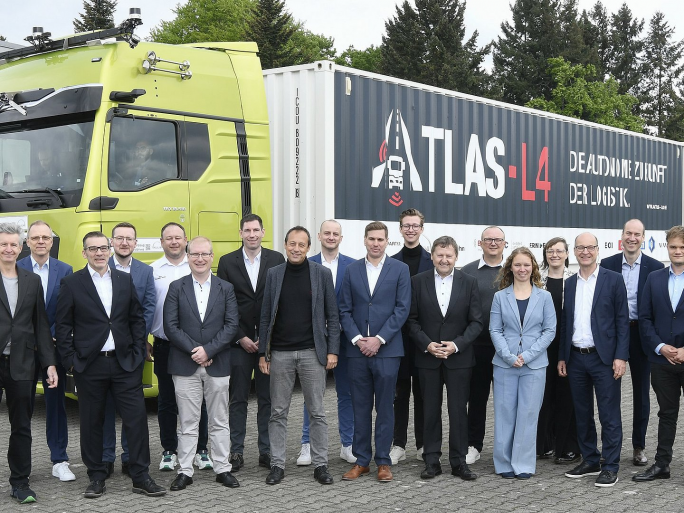Driverless Truck Successfully Tested in Germany

Twelve project partners have implemented the “Automated Transport between Logistics Centres on Motorways at Level 4” (ATLAS-L4).
The autonomous truck in road traffic has become a reality thanks to the work of around 150 engineers. MAN Truck & Bus, Knorr-Bremse, LEONI, Bosch, FERNRIDE, BTC Embedded Systems, Fraunhofer AISEC, Technical University of Munich, Technical University of Braunschweig, TÜV SÜD, Autobahn GmbH and the Würzburg Institute for Transport Sciences (WIVW GmbH) joined forces for the initiative.
The consortium set itself a clear goal in this project, funded by the Federal Ministry for Economic Affairs and Climate Action and backed by a total budget of €59.1 million: to bring a Level-4 automated, and thus autonomous, lorry onto motorways for hub-to-hub transport. The foundation for this was the 2021 legislation enabling autonomous driving on pre-defined routes under technical supervision—positioning Germany as a global pioneer in this field.
“We set ourselves an ambitious goal with our partners and have realised an industrially viable basic concept for autonomous driving in hub-to-hub applications. The development and integration of the redundant components required for safe deployment—such as steering, braking, and power supply—along with the creation of a validation concept, demanded interdisciplinary expertise and close teamwork,” summarises Frederik Zohm, Executive Board Member for Research and Development at MAN Truck & Bus. He adds: “Innovations like autonomous driving require such collaborations in order to effectively advance future technologies in Germany and Europe.”
Testing Phase
ATLAS-L4 was launched on 1 January 2022. After the Federal Motor Transport Authority issued the first Level-4 testing permit for a commercial vehicle manufacturer in April 2024, the premiere on public roads took place with the first motorway journey of an autonomous lorry in Germany. During this and all subsequent test drives, a safety driver was always on board. The automation software in the vehicle was continuously optimised through regular releases and tested directly in practice over an extended period.
The consortium was able to tick off all project goals: Safety-critical components for the Level-4 architecture—such as redundant braking systems, power supply, and steering—were developed. A validation concept was created, and simultaneously, a control centre for technical supervision was put into operation. Risk analyses and safety assessments for Level 4 were conducted, including cybersecurity measures such as authentic and encrypted communication, as well as the definition of functional safety measures including redundancies and degradation concepts for the autonomous driving system. The result: a prototype technology serving as a blueprint for future projects and series development.
Test Vehicle EDGAR
The Technical University of Munich ((TUM) developed key vehicle control technologies as part of the project. These include new methods of real-time control, which function even in uncertain or rapidly changing conditions. Artificial intelligence helps to flexibly adapt the control systems to various driving scenarios and to manage them effectively.
The TUM research team also uses cameras and statistical models to reliably assess road conditions and tyre grip. For remote operation, new concepts were developed to enable safe vehicle control even with poor image quality. All developments were tested in TUM’s EDGAR test vehicle and released as open-source. “Automation in lorry traffic offers the opportunity to maintain transport operations despite the ever-worsening shortage of lorry drivers,” says Markus Lienkamp, Professor of Automotive Engineering at TUM.
What’s Next?
The work of ATLAS-L4 can now serve as a basic concept for future industrial developments. However, for autonomous trucks to enter series production, various detailed issues highlighted by the project still need to be resolved. “We’ve carried out valuable pioneering work by demonstrating the practical feasibility of autonomous trucks,” says project coordinator Sebastian Völl of MAN Truck & Bus. “These concepts are now feeding into the continued development towards series production of autonomous lorries.”
Logistics 4.0 in particular holds great potential: Driverless lorries, as part of a hub-to-hub automation for shuttle trips between logistics depots, can make a significant contribution to greater efficiency and help reduce congestion and accidents. Automation concepts also offer a solution to the driver shortage that the industry has faced for years. At present, around 100,000 lorry drivers are missing in Germany.